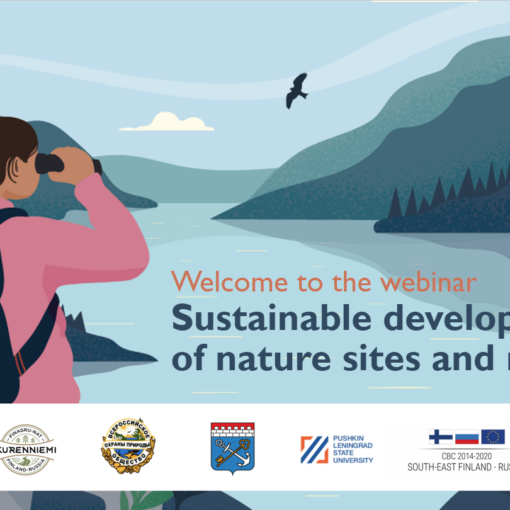Virtual technology offers new but still relatively underused opportunities for rehabilitation. According to ever-increasing research data, rehabilitation utilizing virtual reality can be as effective as conventional rehabilitation in improving the functioning of the upper limbs (Brunner et al. 2017). The AI-mill project (LAB 2021) developed a game demonstration utilizing VR technology for upper limb rehabilitation.
![[Alt text: A young man with virtual reality glasses is practicing his arms.]](https://blogit.lab.fi/labfocus/wp-content/uploads/sites/8/2021/12/701_2021_Design-Thinking_1.jpg)
Physiotherapy with virtual reality and some fun
Goal of the VR-kuntoutuspeli project (Juntunen 2021) was to bring the world of health and well-being and physiotherapy in closer contact with a virtual reality technology. Project was designed to be a serious game project which aims to demonstrate the benefits of VR technology and gamification design for physiotherapy practices. Finished project demonstrates how this kind of game acts as an incentive and motivational tool for physiotherapy patients.
Game in its core is a physiotherapy routine gamified. Demo has six different kinds of activities that simulate physiotherapy motion exercises for arms and upper body. Example activities are apple picking and ball throwing exercises, where player needs to produce movement similar to the motion exercise to complete the tasks. It is easier to do your therapy routine while you are having fun.
![[Alt text: An image from the game, and archery practicing game.]](https://blogit.lab.fi/labfocus/wp-content/uploads/sites/8/2021/12/701_2021_Design-Thinking_2.jpg)
Combating against cybersickness
When talking about virtual reality and VR-games, one also thinks about the nausea and symptoms akin to motion sickness that is associated with this technology. This cluster of symptoms is usually referred as cybersickness. Cybersickness is caused by a number of things inside VR but most prevalent trigger is the motion inside the game that lacks physical equivalent. This theory is called sensory conflict theory (Dennison & D’Zmura 2015).
Inexperienced VR users are more likely to suffer from the cybersickness than experienced users. As the major demographic target for the game was elderly people it is highly possible that player who is going to use the game has no previous experience with VR. Because of this assumption it was imperative that pre-emptive measures against cybersickness was taken during the development.
There are multiple ways for developer to combat against the cybersickness (Fulvio, Ji & Rokers 2021). The most effective way is to get rid of the possible triggers that causes the sickness in the first place. This was done during the project as all of the six activities were developed around the idea that there should be no in-game movement as it is the major trigger for the most users. Other such measures are limiting the color-scheme and lighting to more dimmed and muted colors as the high contrast colors and bright lights are triggers for the symptoms. Other important aspects are limiting the visual and post-processing effects. Such effects that affect the camera control e.g. camera shaking or head bobbing, should be avoided.
Key points that developers should take into account are the visual stimulation and movement. If movement is added to the game, from the two most used methods of movement inside VR, teleportation is preferred to the navigation/stick movement when comparing the nausea induced. High visual stimulation and unexpected movements are big contributors to simulation sickness besides the in-game movement.
Authors
Johanna Irjala is working at LAB as a RDI Specialist and project manager in the AI-Mill project.
Henri Juntunen has worked as a project trainee in the AI-Mill project.
References
Brunner I. et al. 2017. Virtual Reality Training for Upper Extremitys in Subacute Stroke (Virtues): A multicenter RCT. Neurology, 2017. DOI 10.2112/WNL.0000000000004744
Dennison, M. & D’Zmura, M. 2015. Cybersickness without the wobble: Experimental results speak against postural instability theory. [Cited 26 Nov 2021]. Available at: http://cnslab.ss.uci.edu/virtualreality/DennisonDZmura2015.pdf
Fulvio, J. M., Ji, M. & Rokers, B. 2021. Variations in visual sensitivity predict motion sickness in virtual reality. [Cited 26 Nov 2021]. Available at: https://www.biorxiv.org/content/10.1101/488817v5.full
Links
LAB. 2021. Tekoälypaja. Project. [Cited 26 Nov 2021]. Available at: https://www.lab.fi/en/project/tekoalypaja
Juntunen, H. 2021. VR-Kuntoutuspeli : LAB tekoälypaja. Opinnäyte. Thesis. LAB University of Applied Sciences. [Cited 13 Dec 2021]. Available at: https://urn.fi/URN:NBN:fi:amk-2021112120845




